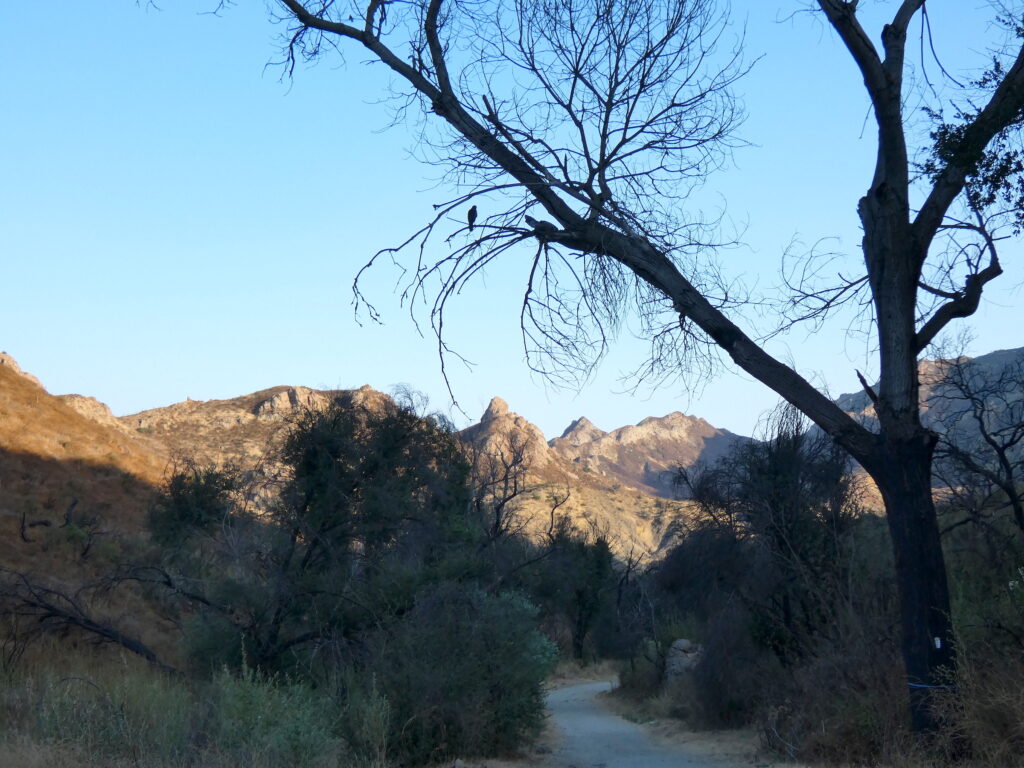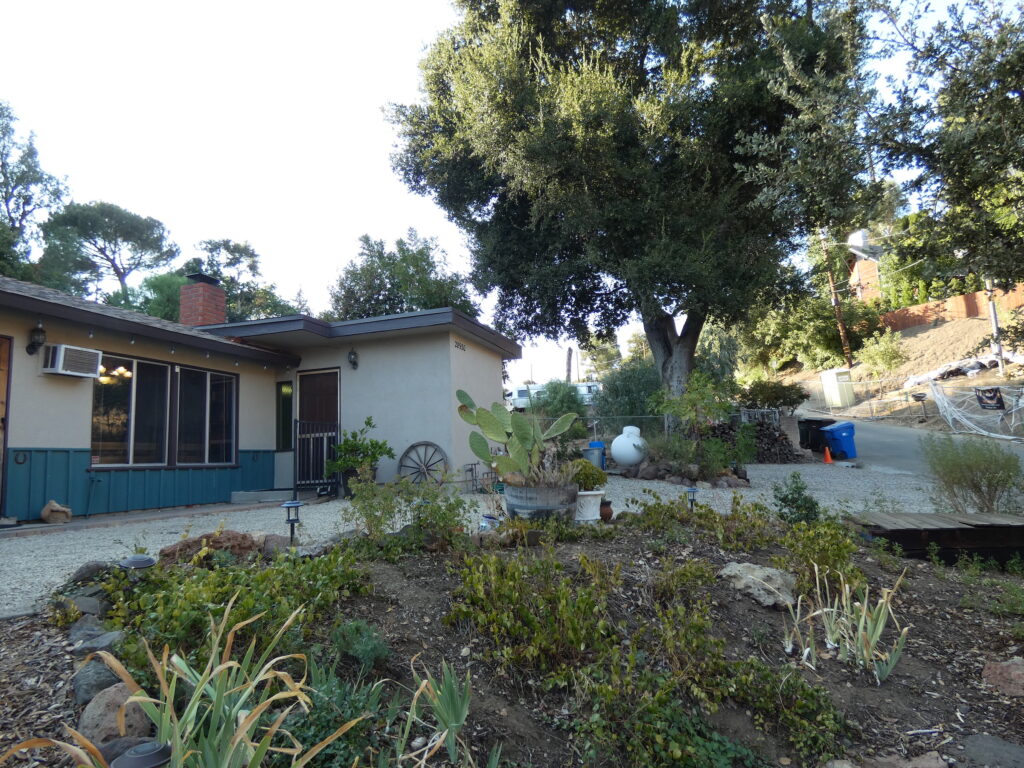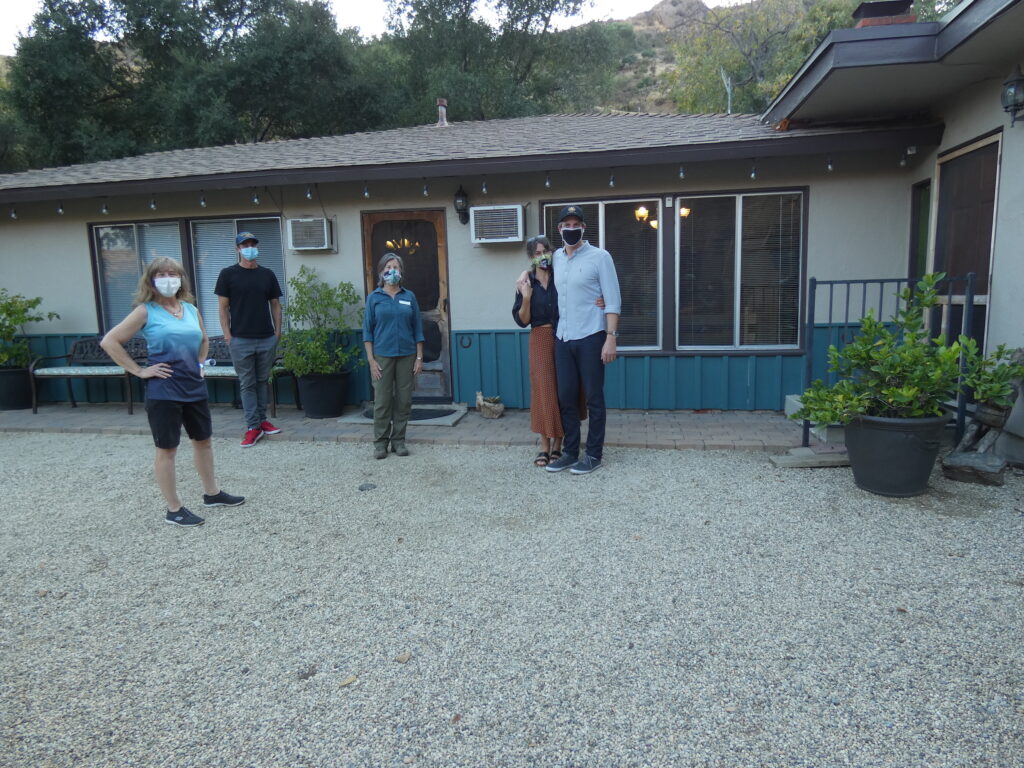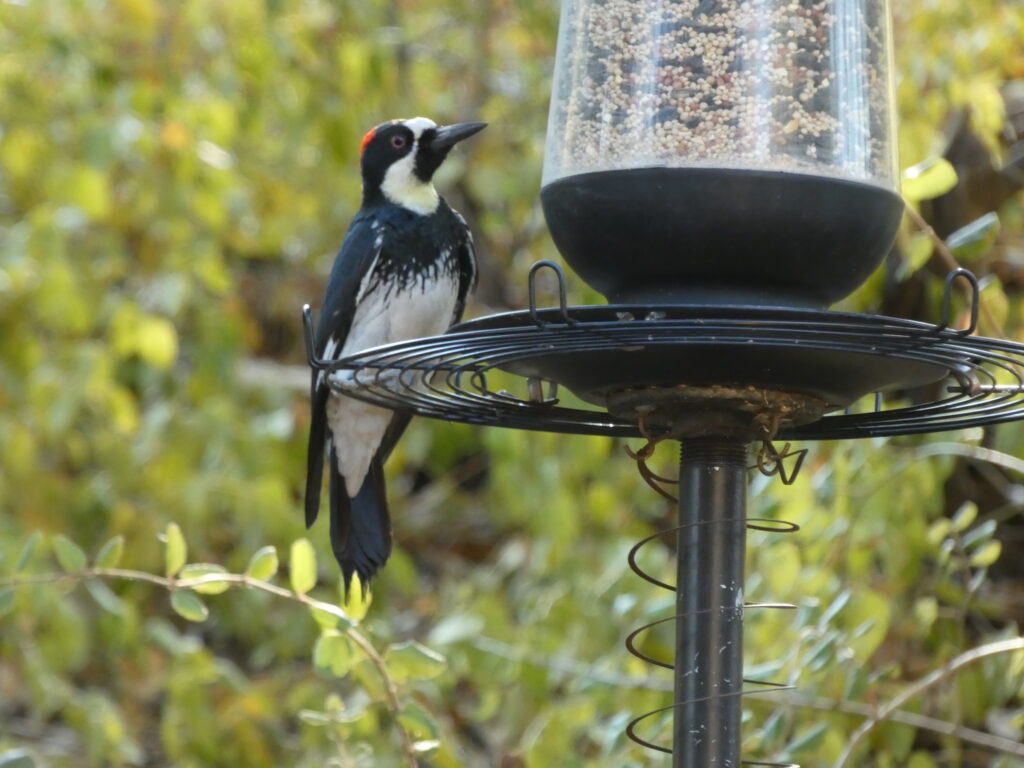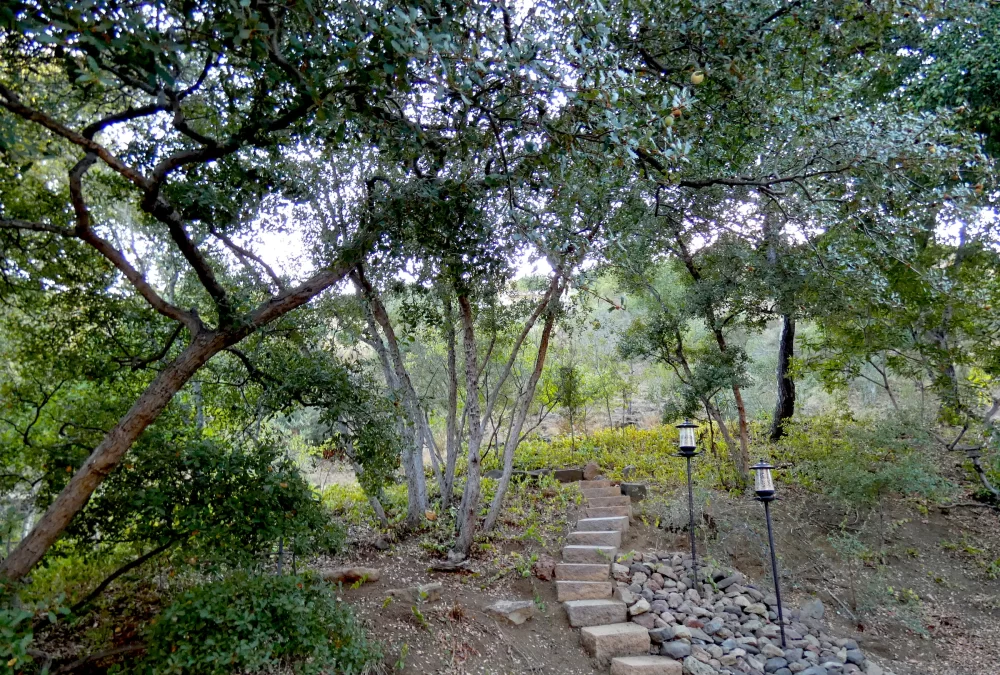The Woolsey Fire roared through the Malibu Lake neighborhood in the early hours of November 9, 2018, damaging and destroying more than half the homes in the small mountain community. This community has much in common with Topanga: many older homes tucked into a rustic canyon, immediately adjacent to a vast expanse of state parkland.
When the Woolsey Fire broke out the Larsen family evacuated early, taking their two horses to safety. No one was at the home when a river of fire poured through the canyon. However, their house survived almost entirely unscathed, because while they weren’t there to fight the fire, the Larsens had prepared for it in advance.
Debbie Larson started the Malibu Lake Firesafe Council. She believes strongly in the power of homeowners to make their homes safer by assessing fire risk and working to address it through simple practical measures like pruning back vegetation, clearing gutters, and making sure there is nothing flammable within five feet of the house.
California State Senator Henry Stern recently visited the Larsons’ home to film a Facebook video about fire safety and learn more about how the Larsens hardened their home against fire. He was joined by North Topanga Canyon Fire Safety Council Co-Founder Beth Burnham, and Malibu resident and volunteer firefighter Keegan Gibbs, one of the “Point Dume Bombers,” the small group of residents who saved dozens of homes during the Woolsey Fire.
“The WUI [Wildland Urban Interface] is coming closer to everyone everywhere in this area and everyone is vulnerable,” Stern said. The goal is to encourage all residents in the Santa Monica Mountains to make their own homes safer, and in this way make entire communities more fire resilient.
Debbie Larson shared the steps she took that she credits with saving her house:
No vegetation of any kind in the first five feet around all structures: no dead leaf litter, no green plants, no overhanging tree branches. Instead of wooden furniture and flower beds, metal furniture and potted plants that can be moved away from the house when fire risk is high.
In the 30-foot envelope around the house, islands of landscaping separated from each other by stone borders. Gravel and pavers in place of mulch or grass.
On the house itself: All gutters either cleared or removed (Larsen explained that it was easier for them to simply remove the front gutter, rather than keep cleaning leaves out of it). Gutter covers may be a better option for other homes. Eaves and corners that trap leaves cleared or sealed. Vents and openings screened with ember-proof eighth-inch screening. All wood trim on the exterior of the house, sealed and painted.
“Embers find gaps,” she explained.
“It’s just like rodent protection,” Beth Burnham added. “If rodents can get in, embers can, too.”
“It takes a lot of work,” Debbie said. “And it never stops. You have to keep clearing leaf litter.” The result, however, was unquestionably worth the effort. The Larsons’ house survived. Iin grim contrast, the home across the street did not.
“My perspective has changed,” Keegan Gibbs said. He helped save many homes in his neighborhood but was unable to save his family’s home. “The focus needs to be on preparation, community awareness and preparation. If you have a well-hardened home you won’t need a fire truck.”
Help is available for those who want to fire proof their homes but feel overwhelmed or don’t know where to start.
“We will come to your neighborhood,” Burnham said, offering her organization’s expertise to help homeowners associations and other groups get started. “We are in this together,” she said. “We need to share knowledge.”
Stern said he is working to develop and promote an incentive program for homeowners and that he is also working to bring insurance companies back to the table, the ones that have increasingly dropped homeowners in high fire risk areas.
“We have to get ahead of this [the wildfire risk],” Stern said, advocating for spending now on prevention rather than spending more later to attempt to rebuild what didn’t have to be lost. “We can get ahead of the curve,” he said.
To watch the Facebook video visit to the Larson’s house, and learn more about Senator Henry Stern’s wildfire policy plan, check out https://www.facebook.com/HenrySternCA/
To learn more about the Topanga Fire Safe Council, watch a video on home hardening, or learn how to do everything from covering vents with mesh, to fire-proofing gutters, go to https://sites.google.com/site/ntcfsc/
